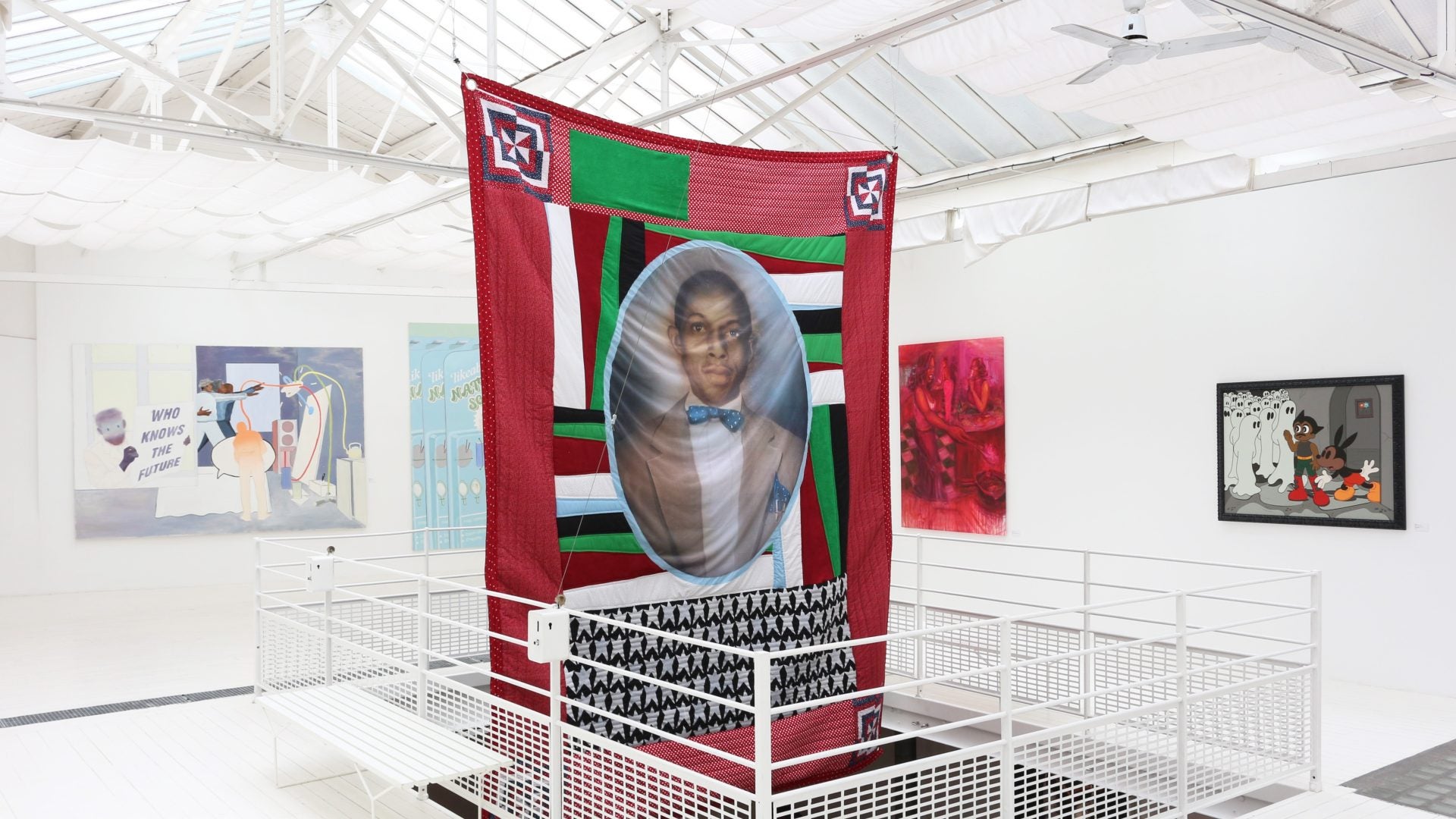
In 1948, African-American writer James Baldwin relocated from his New York home to escape the woes and harsh effects of racism, and Paris became his respite. Baldwin was merely 24 years old with hardly any money, yet he landed on his feet with the help of his community. In the time he spent writing books like Giovanni’s Room while abroad, other like-minded Black artists joined him in Paris such as the sultry-toned iconic singer Nina Simone, performer Josephine Baker, the famed poet Langston Hughes, authors Richard Wright and Chester Himes, and many others.
This year, designer Joseph Robinson, largely known by many fans and sneakerheads as Joe Freshgoods, embodied this community-centric mindset with the exhibition A Friend Named Cousin. Held in Paris at 17 Rue des Filles-du-Calvaire during the Paris Olympics, Robinson seemed over the moon to have such a definitive moment in the oft-gatekept art world. The exhibition has undertones of friendship, love, shared experiences, showing up for one another, and showing up as your true self without fear of judgment. Family in the Black community is an expansive topic with ties often linked outside of blood relatives. This is what Robinson is trying to convey, that family is often chosen.
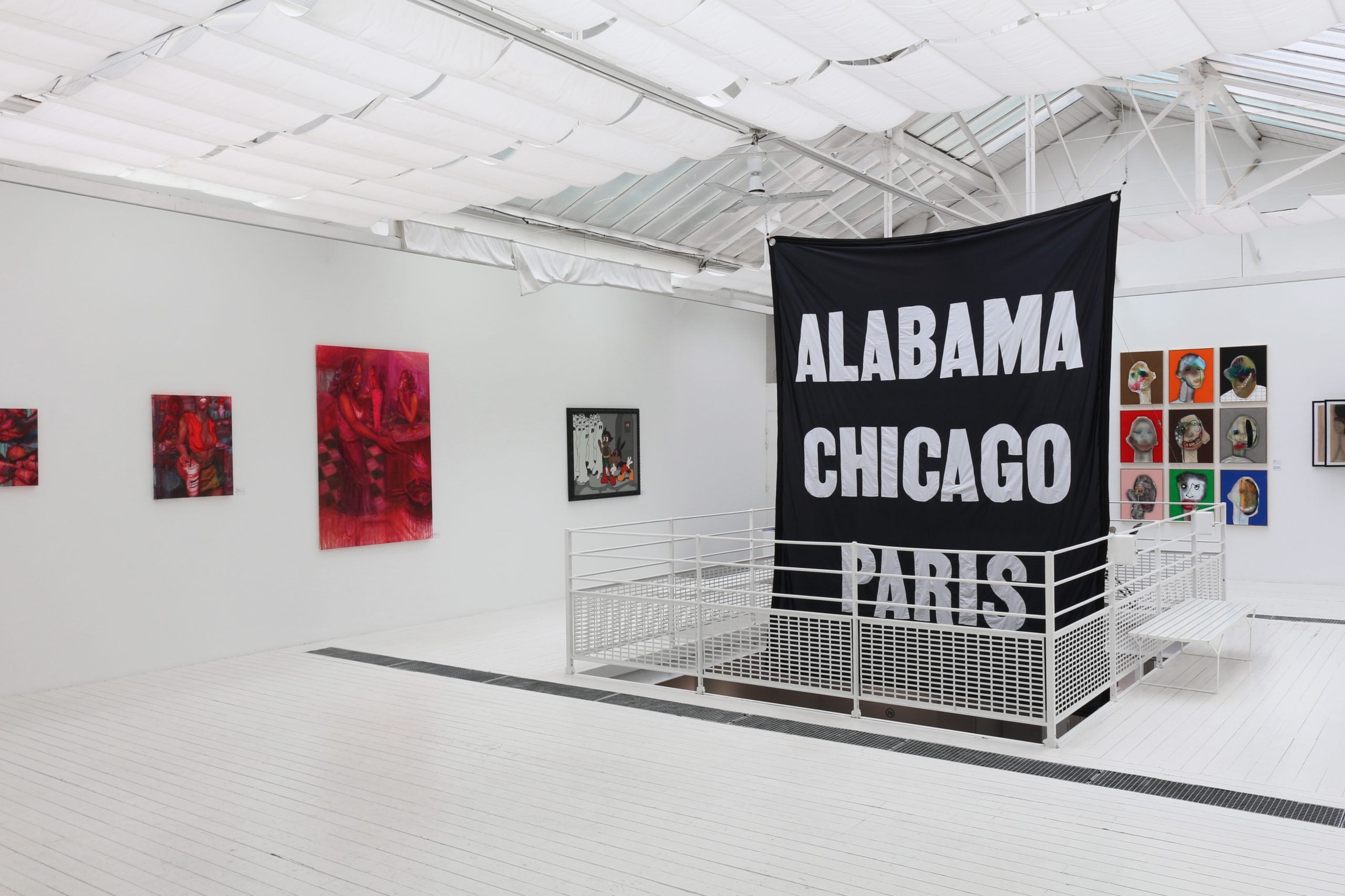
“Depending on what type of family that you have, you start to get into a place in life as you get older that your friends more than you see your actual blood. I think at that stage in your life, that’s your blood,” Robinson explained. “If you fall out with your friends, it’s like you’re falling out with your family. You support each other on your birthdays, you support each other on your worst days. I think sometimes blood is just a fluid and people that come from a whole different side of the world, you can identify with and they can become family, even if it’s not the blood,” he added.
Along with this being his curatorial debut, Robinson also created his first-ever art piece, a quilt reminiscent of those made by the late artist Faith Ringgold. The piece hung over the space and was aptly named Looking Over Me, inspired by the designer-turned-artist’s great-grandfather and grandfather who both passed away early in his life. In the middle of the quilt is an image of Robinson surrounded by a sea of the pan-African colors red, black, and green with the inclusion of white with a wave of stars beneath him in representation of the Great Migration.
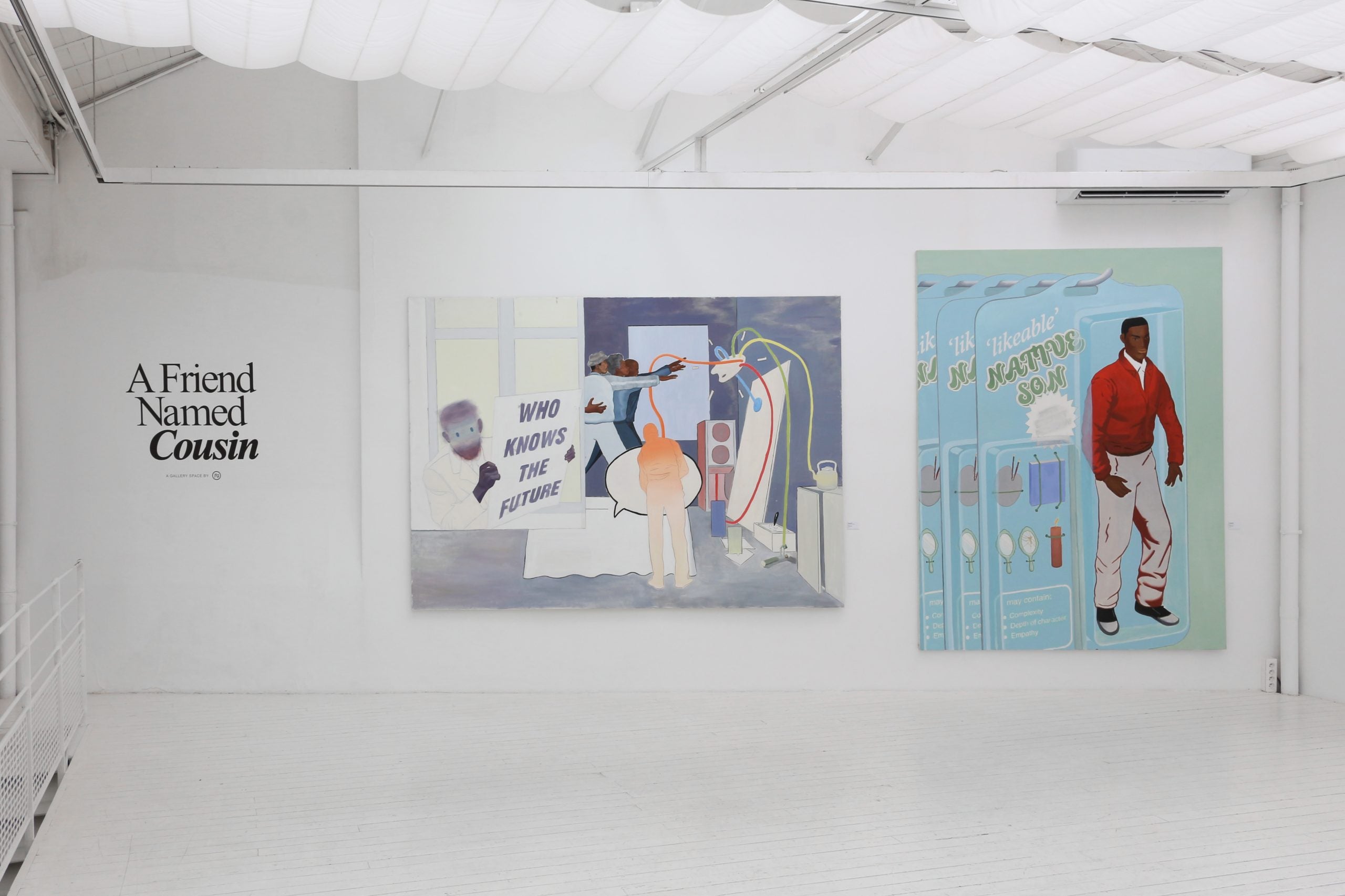
His grandfather migrated from Tuskegee, Alabama to Chicago where he was the first person in his family to become an entrepreneur. He owned a soul food restaurant in the designer’s hometown Chicago. At the back of the sweeping quilt was a reference to the intersectionality of Robinson’s lineage reading “ALABAMA, CHICAGO, PARIS.” These cities allude to where he has been and where he’s going–but they also firmly express that he’ll always be connected to them too.
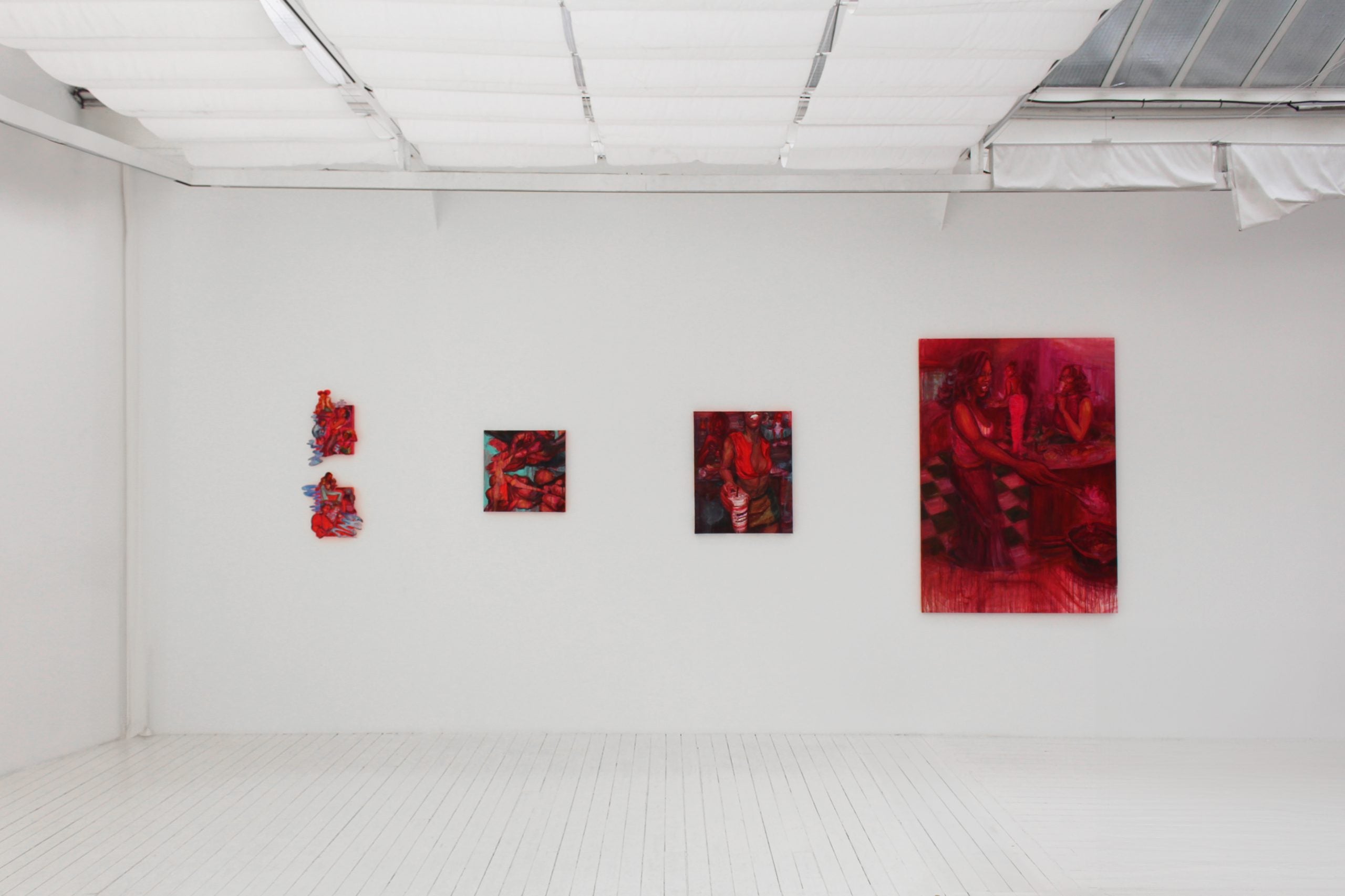
“Slaves and Black people back in the day used to communicate through quilts. I’ve been a fan of having my art on T-shirts, that’s my whole brand. This is a way I can communicate with people. This is like a one-of-one from Joe’s mind. So, I’m going to drop a yearly quilt and put it in my exhibition, and it’s [going to] be my thing now,” Robinson said.
The artists he chose to include in the exhibition are people he calls his friends whom he admired for the past few years such as multidisciplinary visual artist Jewel Ham, figurative artists Teoni and Benga Minthe, contemporary artist Jahlil Nzinga, and Parsian and Haitian artist Goldie Williams. Each artist left their interpretations of a chosen family with depictions like Ham’s hot pink three-dimensional subjects interacting with one another through dancing and conversation in her pieces this is my song! and you got it.
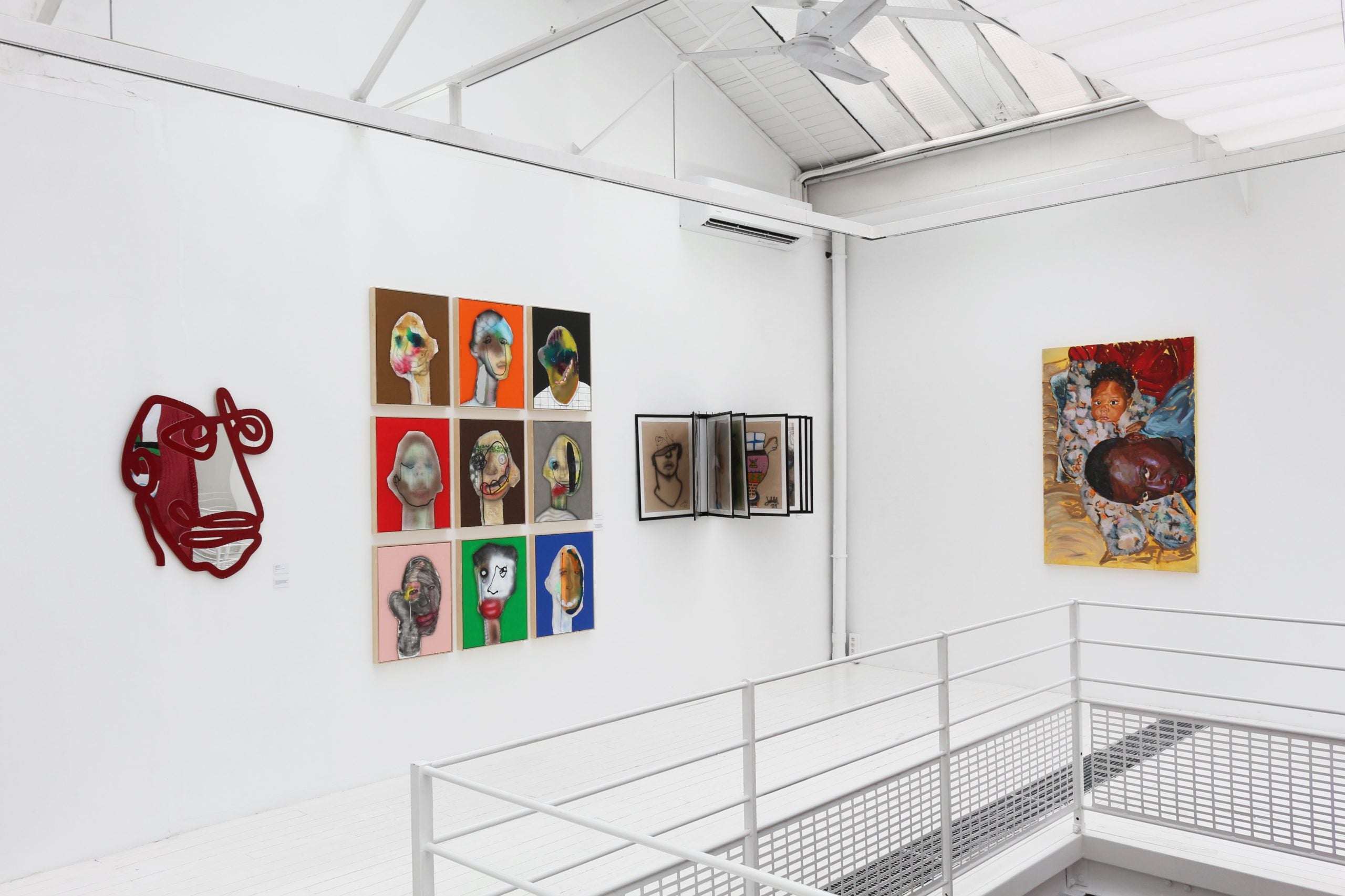
Minthe’s depiction of The Native Son was compelling in its narrative of Black men with a cheeky text at the bottom left reading “may contain: Complexity, Depth of character, Empathy.” Nzinga’s Family is made of subdued, abstract portraits and like what you see multimedia pieces spoke to the synergies and depths of building a family while his mirrored pieces considered the self, looking inward, and how we all play a role in each other’s lives.
Teoni’s figurative portrait for beau, from oni brought warmth to the space with a portrait of fellow artist Olaolu Slawn and his child Beau in layered yellow, red, and blue hues that blend beautifully against the subject’s brown skin tones. Lastly, Williams uses the medium of photography capturing an array of images that feel editorial-worthy with rich colors coming to the forefront and his subjects being dressed in regal and expressive fashion pieces.


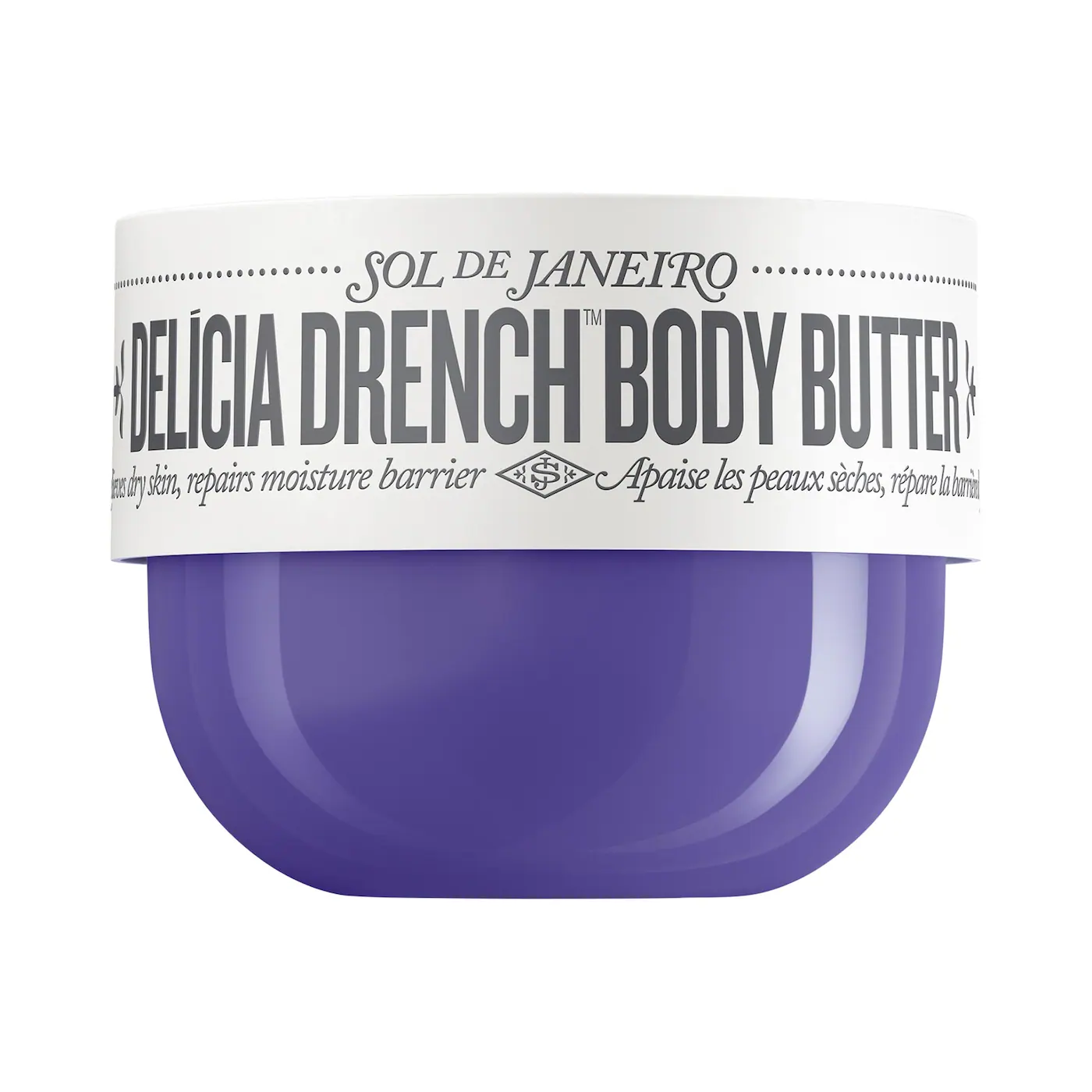
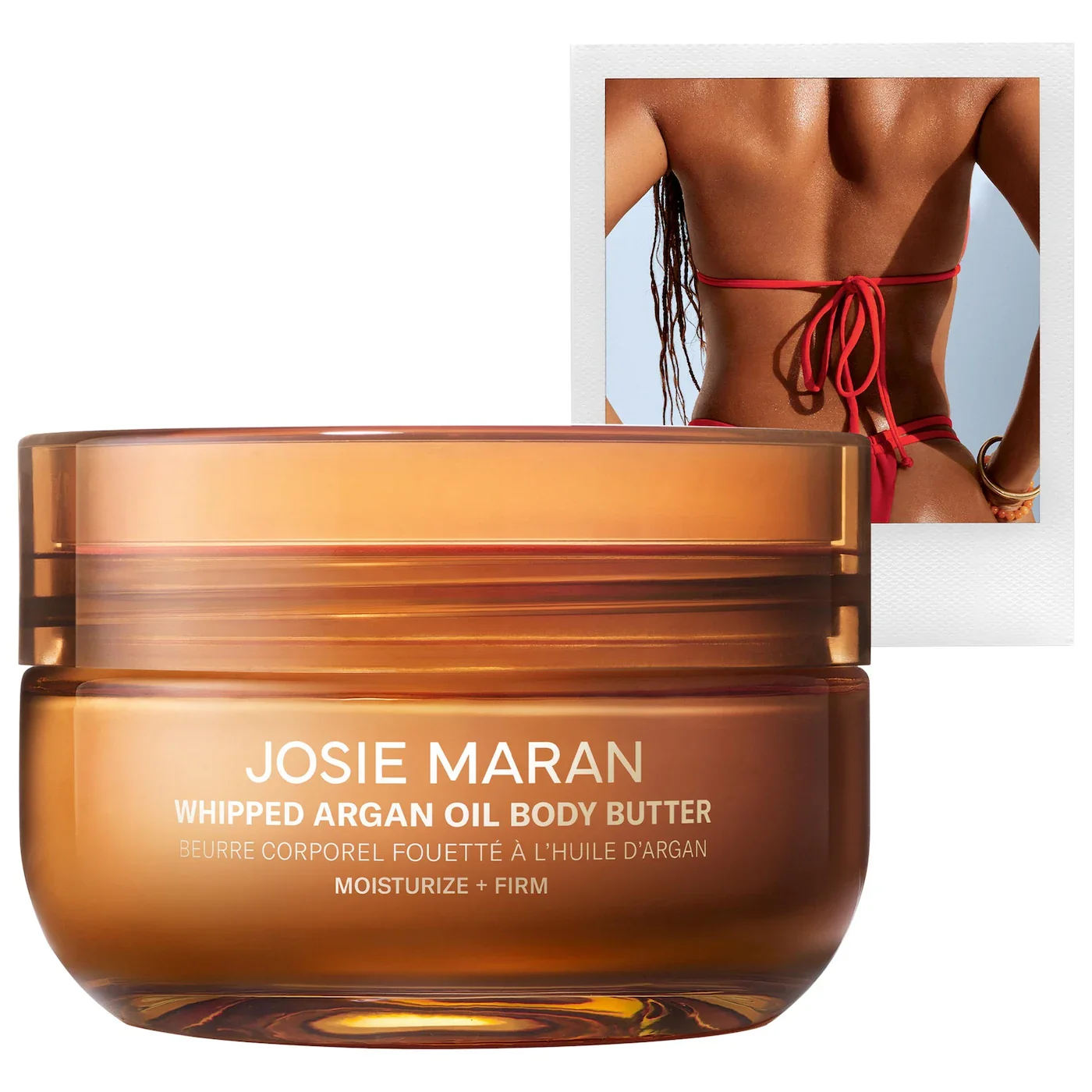
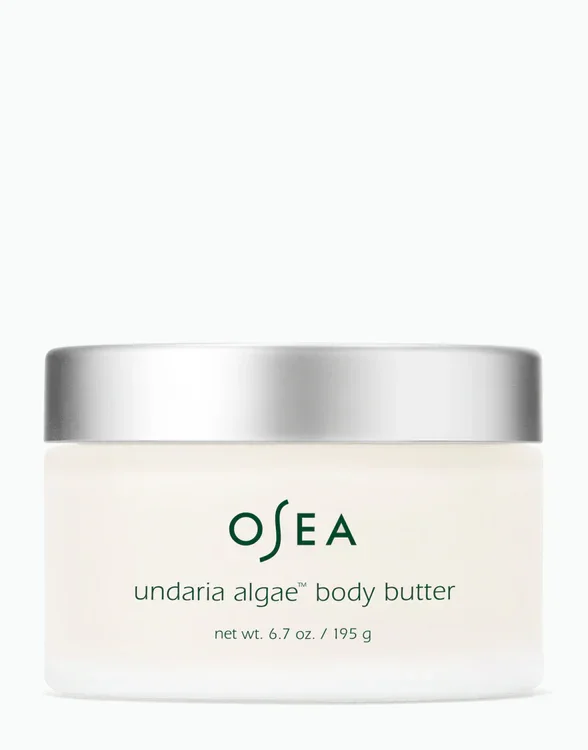


When entering the gallery, you’re taken by the explosion of color and the intention behind each work. Robinson’s inaugural curatorial and artistic expression won’t be the last, he’s a multi-hyphenate with a vision that is invigorated by execution. This installation coming to Paris during the 2024 Olympics was an intentional start to his journey in the art world.
It wouldn’t be a proper Joe Freshgoods project without a sneaker release. In tandem with the exhibition, the designer released a new sneaker collection entitled “A Friend Named Cousin” with longtime collaborator New Balance. The New Balance 990V6 which arrives in two colorways, one a powder sky blue, and another in a cherry red were both previously teased. A moving campaign also was revealed further speaking to the imaginative landscapes that have become indicative of Robinson’s creative ventures. The sneakers which price out at $220 are currently available via a raffle on the designer’s official website (a release was reportedly held in Paris at the exhibit).
“To curate my first show and to have my first piece in a different country for the first time was very scary. I hope I learn more I go, but I just wanted to show up and show out,” he said proudly.






